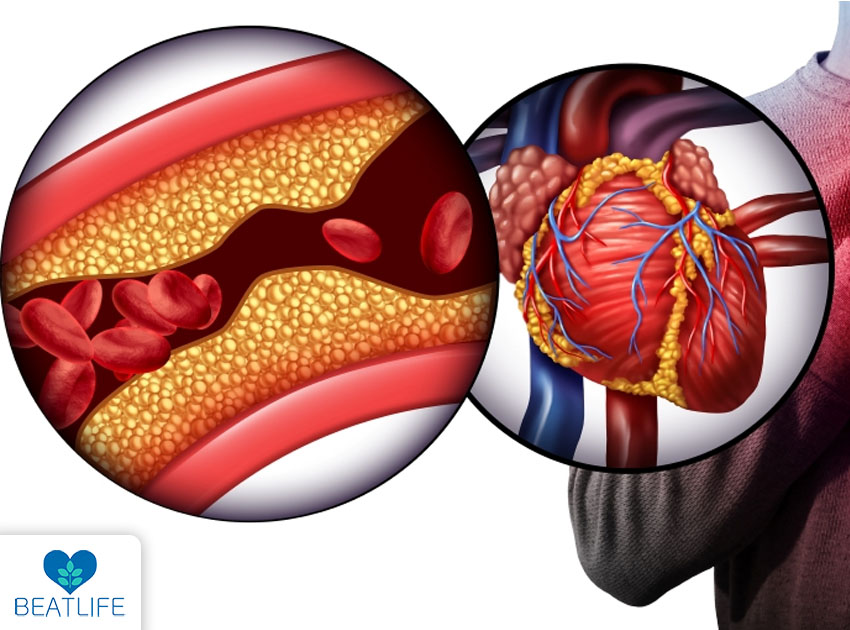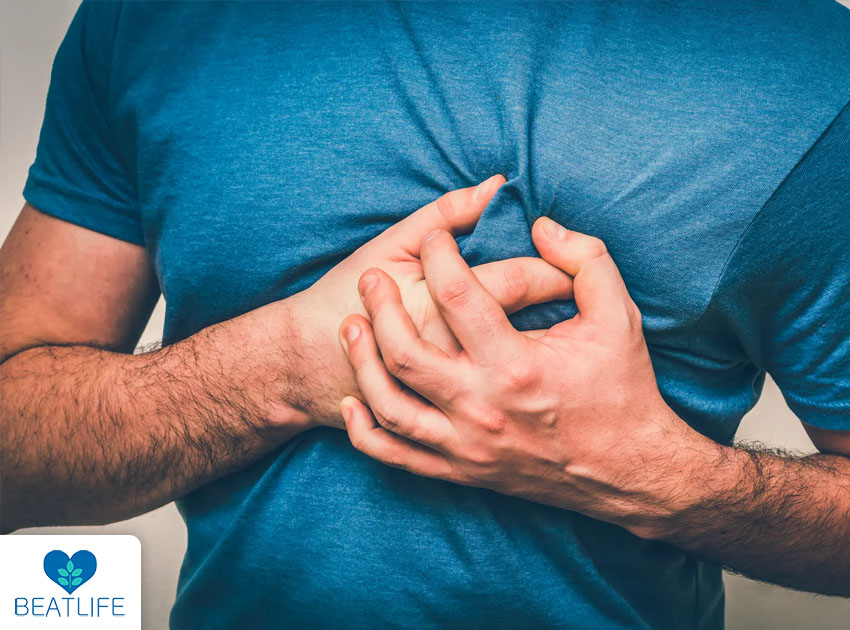Life is maintained by the heart’s intricate network of vessels, which pumps nutrients and oxygen throughout the body with each beat. However, a dangerous foe exists in the quiet world of cardiovascular health: the heart attack. Millions of people are impacted by this widespread medical event, which requires our understanding and attention.
In the text that follows, we will take a trip through the labyrinth of cardiac complexities to solve the mystery surrounding a heart attack. This thorough guide seeks to clarify what a heart attack actually involves, covering everything from the basic physiology of the heart to the crucial details of detection, treatment, and prevention. Come along as we explore the world of cardiovascular health, interpreting symptoms, solving puzzles, and covering crucial first aid procedures like CPR and the introduction of CPR feedback equipment like CPRmeter, which we manufacture at BEATLIFE.
Contents
Understanding the Heart
The heart is the conductor of life’s rhythmic dance, the center of the symphony that is our body. To fully comprehend the intricacies of a heart attack, one must have a basic understanding of the mechanics of this essential organ. The heart is essentially a muscular pump that pumps blood through the body’s network of arteries and veins to provide each and every cell with an ongoing supply of nutrients and oxygen. The heart, which consists of two atria and two ventricles, carefully synchronizes its contractions to preserve a delicate balance.
An essential function of the coronary arteries is to supply the heart muscle directly after they split off from the aorta. A heart attack is the result of a series of events that happen when these arteries become blocked. Deciphering the complexities of cardiac function—from the electrical impulses that control heartbeat to the constant pumping action—provides the foundation for understanding how disruptions from this complex dance can result in the potentially fatal cardiac attack.

What Causes a Heart Attack?
Coronary artery disease (CAD) is a common cause of myocardial infarction, also known as a heart attack. This disorder creates the conditions for a possible heart attack by accumulating plaques or fatty deposits on the arterial walls. These plaques have the potential to burst over time, forming blood clots that can cut off blood supply to a section of the heart muscle.
One of the most common causes of CAD is atherosclerosis, which is the slow hardening and narrowing of arteries as a result of plaque accumulation. The heart can’t get as much oxygenated blood as it needs because of the constricted arteries, especially when the heart is under stress or physically exerting itself. Platelets flood the area when a plaque bursts, creating a blood clot that may block the artery. An abrupt stoppage of blood flow has the potential to cause damage or even death to the heart muscle cells, which could result in a heart attack.
The risk of a heart attack is also increased by diabetes, smoking, and high blood pressure. The underlying causes of a heart attack can be clarified by understanding the complex interactions between these variables and the progressive nature of coronary artery disease. This knowledge opens the door to preventive measures and well-informed healthcare decisions.
Symptoms of a Heart Attack
Recognizing the symptoms of a heart attack is crucial for prompt intervention and potentially life-saving measures. While symptoms may vary, common signs include:
- Chest Discomfort: Most heart attacks involve discomfort in the center of the chest, lasting more than a few minutes or recurring. This sensation can feel like pressure, fullness, squeezing, or pain.
- Upper Body Pain: Pain or discomfort may radiate beyond the chest to the arms, back, neck, jaw, or upper stomach. This can manifest as aching, numbness, or tingling.
- Shortness of Breath: Feeling short of breath, even without chest discomfort, can be a sign of a heart attack. This may occur before or along with chest discomfort.
- Cold Sweats and Nausea: Profuse sweating, often accompanied by cold or clammy skin, and nausea or lightheadedness can be indicative of a heart attack.
- Fatigue: Unexplained fatigue, weakness, or sudden dizziness may also signal a heart attack, especially in women.
It’s important to note that symptoms can vary between individuals, and women may experience atypical signs. Recognizing and promptly responding to these symptoms can significantly improve the chances of a positive outcome during a heart attack.

Types of Heart Attacks
Heart attacks, or myocardial infarctions, can be classified into several types based on the affected area of the heart and the severity of the damage. The three main types are:
ST-Segment Elevation Myocardial Infarction (STEMI):
- This is a severe and often more dangerous type of heart attack.
- It occurs when a coronary artery is completely blocked, leading to a significant portion of the heart muscle being deprived of blood and oxygen.
- Immediate medical intervention, such as angioplasty or stent placement, is crucial to restore blood flow and minimize heart damage.
Non-ST-Segment Elevation Myocardial Infarction (NSTEMI):
- NSTEMI is a less severe form of heart attack compared to STEMI.
- It occurs when there is a partial blockage in a coronary artery, reducing blood flow to a part of the heart.
- While not as urgent as STEMI, prompt medical attention is still essential to prevent further complications.
Unstable Angina:
- Unstable angina is considered a precursor to a heart attack and is characterized by chest pain or discomfort that occurs at rest or with minimal exertion.
- Unlike a heart attack, it does not cause permanent heart damage.
- It is a warning sign that immediate medical evaluation and intervention are needed to prevent a more severe event.
Silent Heart Attack:
- Some heart attacks may occur without noticeable symptoms, a condition known as a silent heart attack.
- Individuals might not realize they’ve had a heart attack, as there are no or minimal symptoms.
- Silent heart attacks are often identified through diagnostic tests performed for other reasons.
Understanding the type of heart attack is crucial for determining the appropriate treatment plan. Timely medical intervention, lifestyle changes, and medications are key components in managing and preventing further heart-related issues.

Diagnostic and first aid
The diagnosis of a heart attack involves a combination of clinical evaluation, medical history assessment, and diagnostic tests. Common diagnostic procedures include:
- Electrocardiogram (ECG or EKG): An ECG records the electrical activity of the heart and helps identify irregularities. It is a primary tool for diagnosing a heart attack, as specific patterns on the ECG can indicate damage to the heart muscle.
- Blood Tests: Blood tests measure the levels of cardiac biomarkers such as troponin and creatine kinase-MB. Elevated levels of these markers indicate heart muscle damage and confirm the occurrence of a heart attack.
- Coronary Angiography: This procedure involves injecting a contrast dye into the coronary arteries, followed by X-rays to visualize the blood flow in the heart. It helps identify blockages or narrowed arteries, guiding decisions on further treatment.
- Echocardiogram: An echocardiogram uses sound waves to create images of the heart’s structure and function. It helps assess the extent of damage to the heart muscle and determines the heart’s pumping efficiency.
First Aid for a Heart Attack
Immediate response during a heart attack is crucial for a positive outcome. Here are the steps for providing first aid:
- Call Emergency Services: Dial emergency services (911 or local emergency number) immediately when symptoms of a heart attack are observed.
- Chew Aspirin: If the person is not allergic to aspirin, have them chew a regular aspirin (not enteric-coated) to help reduce blood clot formation.
- Stay Calm and Rest: Encourage the person to sit down and rest while awaiting emergency assistance.
- Perform CPR (if necessary): If the person becomes unresponsive and stops breathing, initiate CPR (cardiopulmonary resuscitation) until professional help arrives. You can use CPRmeter to ensure you are performing it correctly to get the best result.
- Use an Automated External Defibrillator (AED): If an AED is available, follow the device’s instructions for use in case of a sudden cardiac arrest.
Quick and appropriate actions during a heart attack can significantly improve the chances of survival and minimize long-term complications. It’s crucial to prioritize seeking professional medical help promptly.
How to prevent heart attack?
In order to lower the risk of heart attacks and improve general cardiovascular health, prevention is essential. A heart-healthy lifestyle necessitates a number of important actions. First and foremost, it’s critical to keep a nutritious, well-balanced diet low in saturated fats, cholesterol, and sodium. Frequent exercise, including strength training and aerobic activities, improves cardiovascular health and aids in weight management. Two more heart-healthy lifestyle choices are cutting back on alcohol and quitting smoking. Frequent screenings and check-ups help identify risk factors early on, allowing for prompt intervention. Taking medication as directed by medical professionals is essential for managing conditions such as high blood pressure, diabetes, and cholesterol. These efforts are enhanced by practicing stress-reduction strategies like mindfulness and meditation. People can greatly lower their risk of having a heart attack and improve their general well-being by adopting a holistic approach to he

